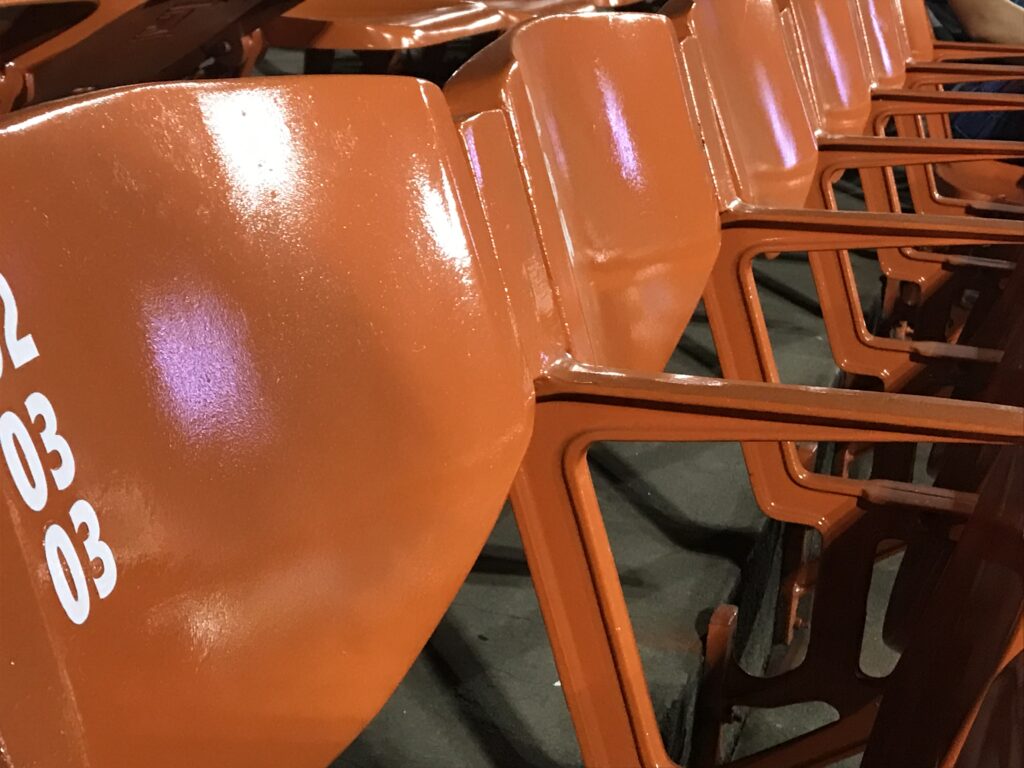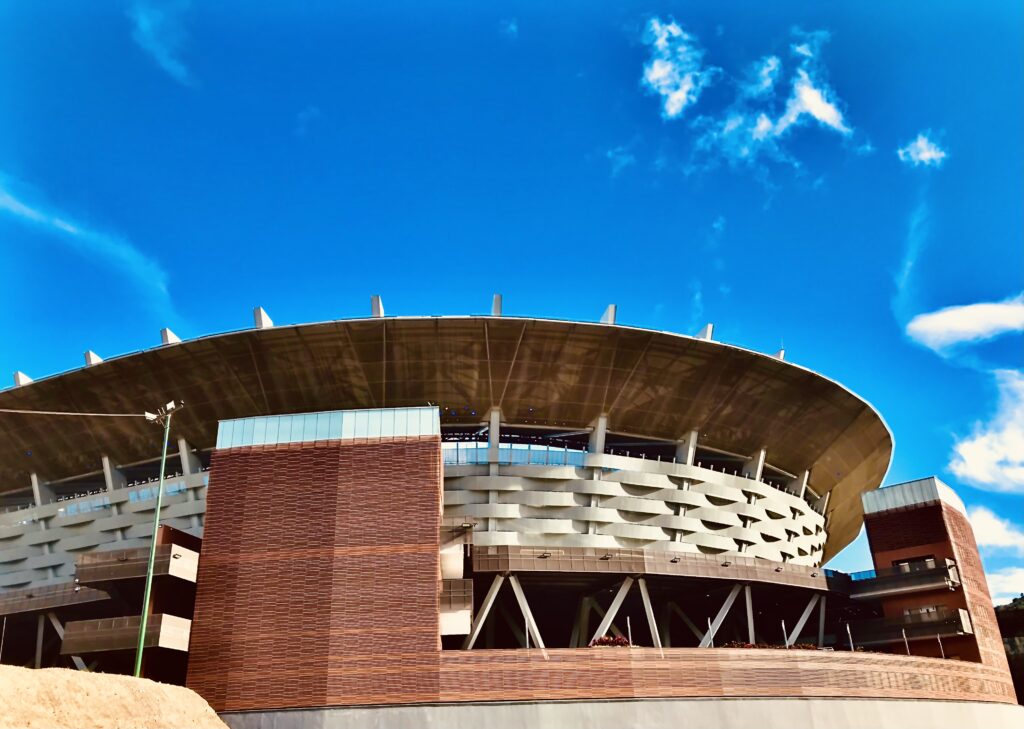The New, The Old and The Unbelievable: Watching Baseball in Caracas
When you move to the Venezuelan capital from a city like Maracaibo, or have spent some years abroad, you may be amazed by how affordable watching Ronald Acuña can be, and how spectacular is the new stadium


I’ve been writing a recap of the professional baseball league every January for the past few years and chronicled the struggles and evolution of the league. I’ve been doing so from my hometown, Maracaibo, so the perspective has been very much tied with my local stadium, Luis Aparicio El Grande.
This year life threw me a sweet curveball, so I decided to do things a little differently. I’m about to become a father, and for personal reasons related to medical choices, me and the missus decided to have our baby girl in the almighty Caracas, so we relocated for the past months.
That move meant that for the first time in at least 30 years I was not able to see Aguilas del Zulia play in my city. But it just so happens that in this city there are not one, not two, but three stadiums. This is what I saw.
The New
Tiburones de La Guaira divides their local games between two stadiums, the classic Estadio Universitario in Caracas, and the Forum de La Guaira, a strange, shiny public complex inaugurated in 2020 and actually located in the city that has the name of the team.
I went to a night game to see Aguilas play Tiburones. The Forum holds a little more than 14,000 people capacity, which makes it the smallest of the three ballparks in the area. It’s definitely a charming little place.
The outfield collides with the Caribbean Sea, which gives the whole thing a perpetually beautiful view. Because my visit was during the night, all you could see was pitch black darkness. It was like watching a baseball game in outer space, weird and lovely actually.
Venezuelan baseball, as a product, has certainly been on the rise since I started writing these pieces. The best example by a mile is the presence of Ronald Acuña Jr. arguably the best baseball player in the world right now (top 3 without a doubt).
He played a few games last season for La Guaira, and this season he played even more games. I couldn’t believe I got to see him play, in a high intensity level mind you, for free… one of the perks of being (some sort of a) writer.
The stadium was not at full capacity that day, but it had a good amount of fans in the stands. In a normal world, getting the chance to see Acuña up close should move large amounts of crowds. But normal and Venezuela parted ways a long time ago.
As I said, there was a good crowd, this was due mostly to the fact that a large percentage of the capacity had access to one-dollar tickets. Even free tickets were available. Maybe not a good business model, but I thought this was a nice touch. These people got to see Acuña for free too, it made me feel a little less self conscious about my dubious advantages. I got to see a 67-year-old man cheering with the passion usually reserved for children. He told me he’s been rooting for Tiburones since their inaugural season in 1962. That’s baseball for ya.
I also got to hear the stadium announcer thank Tibu, the mascot of Tiburones de La Guaira, and in a bizarre move, say the actual name of the person inside the suit. That’s like being at the Magic Kingdom and someone telling you “that’s not Donald Duck, that’s Bob Johnson”.
The Old

The next day I went to see a rematch of Aguilas – Tiburones, but this time in Caracas’ Estadio Universitario. With a capacity of 21,000, this was until recently the biggest baseball stadium in the country, also one of the oldest, dating back to 1951.
I was running late for the start of the game and Caracas has a notorious traffic problem, unlike the rest of the country where mass immigration and gas shortages are easily noticeable. Caracas seems to be somehow business as usual, so, in order to make it in time, I decided to take a mototaxi.
I must preface this by saying that I’ve never been on a motorcycle in my life, and, for some reason, I decided to do so for the first time in 42 years just days away from the birth of my first child, showing some of that common sense I hope to pass to her.
The first and only communication that the driver gave to me was “please don’t touch me or the bike because I lose balance and we’ll fall”. Suddenly I was at the Francisco Fajardo highway during the 6pm rush hour being driven by Tom Cruise’s stuntman in Mission Impossible. I have never wanted to be in a baseball game as bad as in these, what seemed to be eternal moments.
This is a starkly different ballpark, and way closer to what I’m used to in Maracaibo. A shiny artifact of the past. The attendance was way lower. Ticket prices range between 10 and 26 dollars.
I have to tell another story that Venezuelans of a certain age will probably grasp. The National Anthem that day was sung by Nifu Nifa. That’s right, a group of clowns from the 80’s and 90’s. This is the closest I’ve been to being on LSD without actually taking it. For those of you that might wonder, yes, they did sing “Kikiki Cococo” afterwards, and yes, my brain did have a meltdown.
Because the bleachers were completely empty, I got to walk towards them and watched a couple of innings all alone in the outfield. This type of magic loneliness only baseball can bring into my life. With Ronald Acuña playing center field, I was, at some point in the night, the closest human being in terms of physical proximity to one of the best professional athletes on the planet during an actual game. I doubt that this can happen in a place other than Venezuela.
The Unbelievable

Lastly, I went to see Aguilas del Zulia face Leones del Caracas in the brand new Estadio Monumental Simon Bolivar on a Saturday afternoon, and this was something else. This part of the story might be hard to grasp for anyone that’s been reading stories about this country for the past decade.
The Monumental had its debut in February of 2023. Its name fits the building. Located in La Rinconada, the outskirts of Caracas, the stadium holds a capacity of 40,000 people, by far the biggest in the country. I’ve been lucky enough to visit several Major League Baseball stadiums in the US and Canada, and Caracas Monumental stadium has nothing to envy from these first-world places.
Even though it is surrounded by La Rinconada’s horse track and El Poliedro, an emblematic concerts and sports venue, it feels isolated. As of yet has not a proper parking structure for the size of the stadium. But once you’re in it, it’s hard not to be in awe.
For those of you not avid in sports, stadium bathrooms are the place where human dignity goes to die. But at the Monumental the tables are turned. These bathrooms were Xanadu, the promised land. Cleanliness galore. It almost makes you want to use a public bathroom just to tell the story.
Again, as a writer, I get some special dispensations, so I didn’t have to pay the ticket. I also was not allowed to stay in the fantastic press box because I was wearing shorts. My arrested development stung me again. But I meant to see the whole stadium, so staying in the press box was not my plan to begin with.
Ticket prices ranged from 3 to 35 dollars that day, and I can attest that there was a good view from anywhere inside. Even if this ballpark seems to be an emblem of a Venezuelan economic bubble that bears little connection with the actual reality of most, the actual access, at least for the game I went to see, was not exclusive at all. It seemed affordable. Unfortunately, maybe not enticing enough… The attendance was very low that Saturday.
There are padel courts, paintball, a nightclub, a sushi restaurant with a 5-star lobby and a casino; I guess an inevitable touch of the Caracas consumption frenzy. There are luxury suites to watch the game. Again, this is a first world facility. I visited Madrid’s Santiago Bernabeu, home of Real Madrid a few weeks before. The seats at the Monumental were unequivocally more comfortable. This exists in Venezuela.
When Leones hit home runs (and unfortunately there were a bunch of those in that game), big balls of fire exploded from the big billboard that said Simon Bolivar. I couldn’t help but think what would the actual Bolivar say if he could see his giant name surrounded by huge flames. He’d probably have more questions about the actual rules of baseball though. And if we consider that the stadium was initially supposed to be named after Hugo Chavez, the flames and the sport would be more congruous with the late pitcher from Sabaneta.
People with common sense might feel a big sting of moral ambiguity. Do we really need this mammoth construction? In the long run I will have questions. Even to the financial sense (or lack thereof) it makes to have this stadium in this country, let alone the moral aspect. But on that Saturday for three hours, I had no questions, I was just happy. It’s baseball folks, it’s just baseball.
Caracas Chronicles is 100% reader-supported.
We’ve been able to hang on for 22 years in one of the craziest media landscapes in the world. We’ve seen different media outlets in Venezuela (and abroad) closing shop, something we’re looking to avoid at all costs. Your collaboration goes a long way in helping us weather the storm.
Donate




